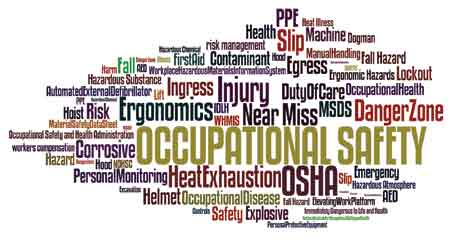OSHA Revises Labeling and Signage Requirements
Part two of a three-part article on OSHA updates
OSHA also has revised labeling and signage requirements associated with hazardous chemicals in the workplace. Managers already should have trained their employees on the new OSHA formats for chemical SDSs and chemical container labels by Dec. 1, 2013. The next big compliance date for the new hazard communication standard requirements is June 1, 2016, when managers will need to have updated their written hazard communication program to meet the revised OSHA regulations.
Employers with employees exposed to hazardous chemicals in the workplace must have a written hazard communication program. In July 2015, OSHA issued a compliance directive to its compliance officers on ways to cite employers for violations to the revised hazard communication standard. The directive addresses several items managers must address in a written hazard communication program:
Chemical inventory. The inventory must include a product identifier for each chemical known to be present that aligns with the SDS and label. The inventory can cover the entire facility or individual work areas, and it must include all chemicals present, even if the chemicals are stored or not in use.
Non-routine tasks and unlabeled pipes. If applicable, the program must cover the methods the employer will use to inform employees of the hazards in non-routine tasks, as well as hazards associated with chemicals contained in unlabeled pipes in their work areas.
Multi-employer worksites. The program must cover methods to provide the other employers on-site access to SDSs for each hazardous chemical to which the other employees might be exposed. This includes the method of informing other employers about any necessary precautionary measures to protect employees, as well as ways to inform other employees about the labeling system used.
Program availability. How is the written program available to employees, employee representatives and OSHA representatives upon request?
Labels and other forms of warning. This component must include: a designation of the persons responsible for labeling on shipped containers and of the persons responsible for workplace labeling; descriptions of the labeling system used and of alternatives to labeling for workplace containers where applicable; and procedures to review and update label information when necessary for employer’s workplace labeling.
Safety data sheets. The program must designate the person responsible for obtaining and maintaining the SDSs. It also needs to define the way SDSs are to be maintained — in notebooks in the work area, in a pick-up truck at the jobsite, etc. — as well as procedures for retrieving SDSs electronically, including backup systems to be used in the event of failure of the electronic equipment and the way employees can access the SDSs. The written plan also must include procedures to follow if the SDS is not received at the time of the first shipment, procedures to follow if employees suspect the SDS is not appropriate, and procedures to follow to determine if the SDS is current.
Training. The program must designate the person responsible for conducting training and define the way the training will be conducted — written, visual presentation using slides, verbal, etc. The procedures also must cover training for new employees at the time of their initial assignment and training employees when a new hazard is introduced into the workplace.
OSHA provides a guidance document that includes label requirements along with an example hazard communication program available at http://www.osha.gov/Publications/OSHA3695.pdf.
Related Topics:














